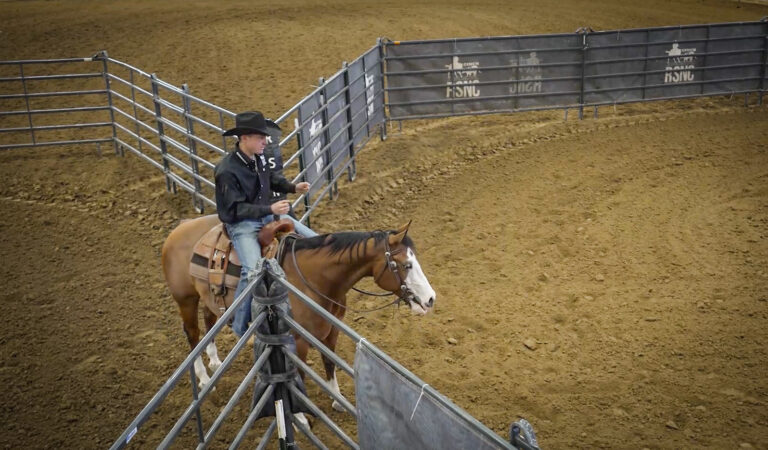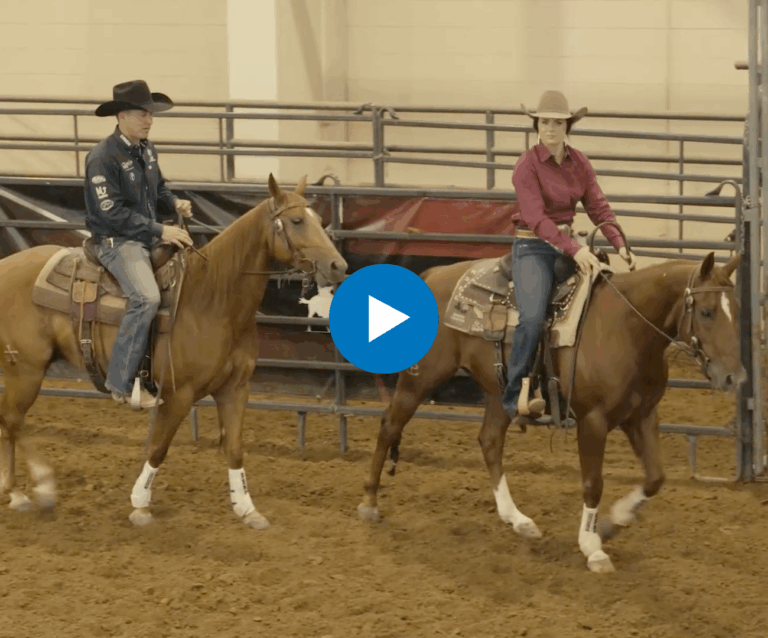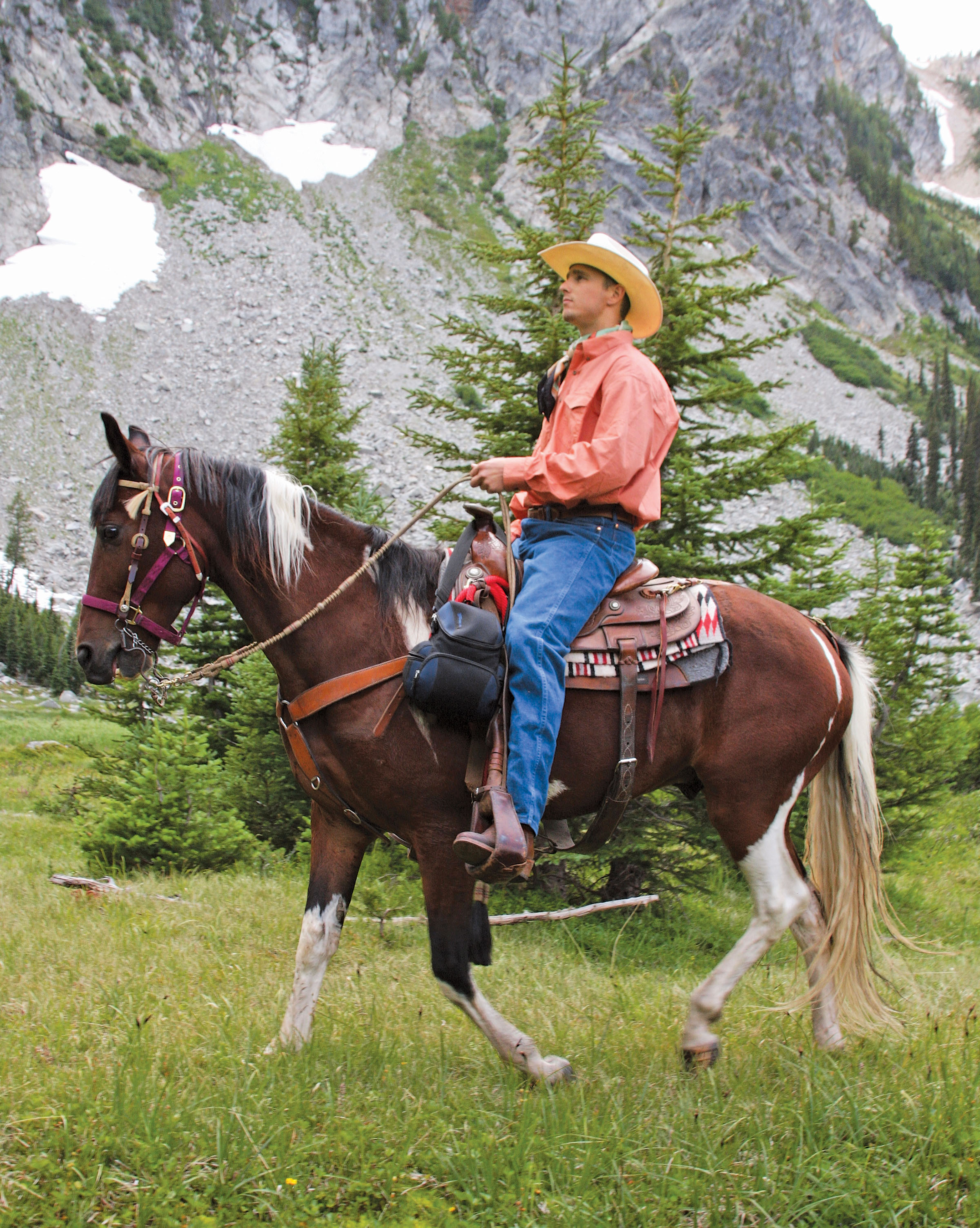
What if I told you that you’ll be running a marathon tomorrow. Over various terrain. In the heat. No matter if you consider yourself in fair shape or haven’t exercised in months, you’d probably panic. Your body isn’t ready for that kind of exertion!
[READ: Trail Riding Fitness]
The same holds true for your horse when you decide to take him on a long, challenging trail ride without preparation. Just like you, a “soft” or out-of-shape horse not only becomes tired on a long ride, but is at risk for problems and injuries such as cinch and saddle sores, strained/sore muscles, pulled joints, dehydration, heat stress, colic, and other potentially dangerous conditions. Here, I’ll offer eight essential tips for legging your horse up for the season’s trail rides so you won’t miss out on any of the fun. My hints focus on trail riding, but they hold true for bringing a performance horse into shape, too.
Prepare for Success
Any good get-in-shape program begins with setting your horse up for success so every variable is weighted in his favor. Deworm and vaccinate him, and check his body condition. Ideally, he should be in moderate flesh, with ribs that can be felt but not seen. Also consider his hoof care—when was the last time he was trimmed or shod? Don’t wait until the last minute to get his feet taken care of before you start a regular riding regimen, especially if it’s been a while since his last farrier appointment. That can lead to foot soreness and a sour attitude to go along with it.
Feed for Fitness
Once you’ve evaluated your horse’s body condition, assess his feeding program to get him to that desired flesh. If he’s thin, gradually increase his feed as you start riding. He’ll need extra calories for energy as well as building up body reserves. But don’t suddenly increase his grain ration, or you’ll risk indigestion, colic, or laminitis. Make any feed changes gradually to allow his system to adapt and so you can carefully evaluate the program.
If your horse is fat, he’ll tire easily during exercise, thanks to the extra burden of carrying all that weight around, and become overheated quicker, since fat acts as insulation and makes it harder for him to cool himself efficiently by sweating. Whether his plump state results from ample pasture or too much hay during idle months, don’t cut back his feed. He’ll burn off the extra calories and pounds as you bring him back into shape. If he’s fat from too much grain, however, do cut back his concentrate ration until he loses the fat.
In either case, you’ll eventually need to increase his feed as you ride him more, when his energy demands are greater.
[READ: Feed for the Need]
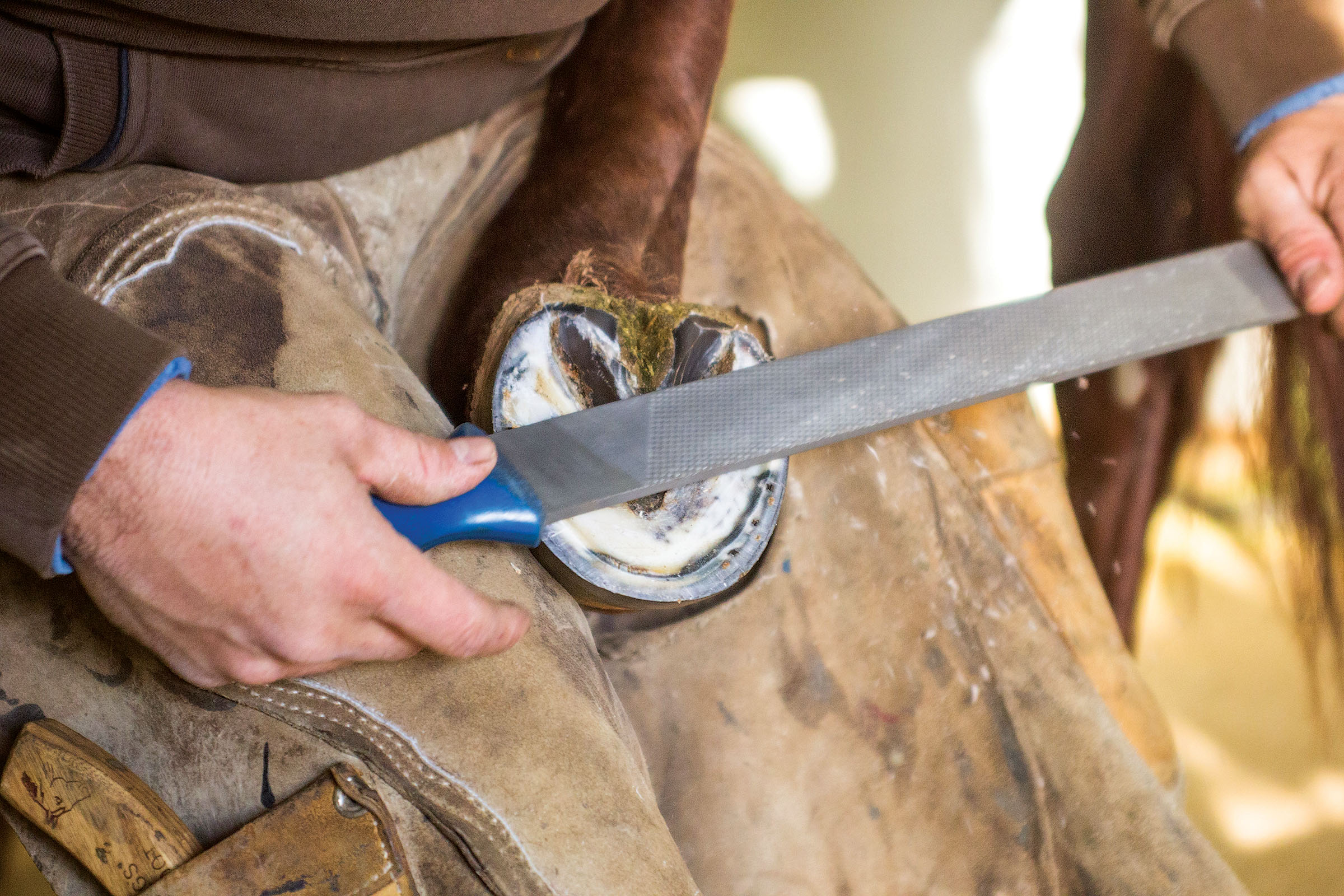
Begin Slowly
Start with daily short rides at the walk, gradually increasing the length and the work (some trotting and hill climbing). If your horse has been outdoors in a pen or pasture where he’s had some exercise (especially if he’s been with other horses, self-exercising during normal activities) he won’t be quite as soft and you can progress a little faster.
The very soft horse needs ample time to gain fitness—as much as two months, in some cases. The safest route is to start slowly, monitoring his response to the work and checking recovery rates during and after a ride. Keep in mind that muscle gains strength faster than other body systems. You might be tempted to rush the conditioning process because your horse looks and feels good, but that’s not the only indicator of his fitness level. Push too hard, too soon, and your horse runs the risk of problems you can see, like cinch sores, and underlying issues, like overtaxed muscles that lead to joint injuries and body soreness.
Gradual conditioning enables your horse’s body to adapt to the workload without pushing him too far at once. Give him some rest stops during a conditioning ride, and some days off between rides when he needs a break. Don’t over-stress him or burn him out physically or mentally with too much work; he needs rest between rides.
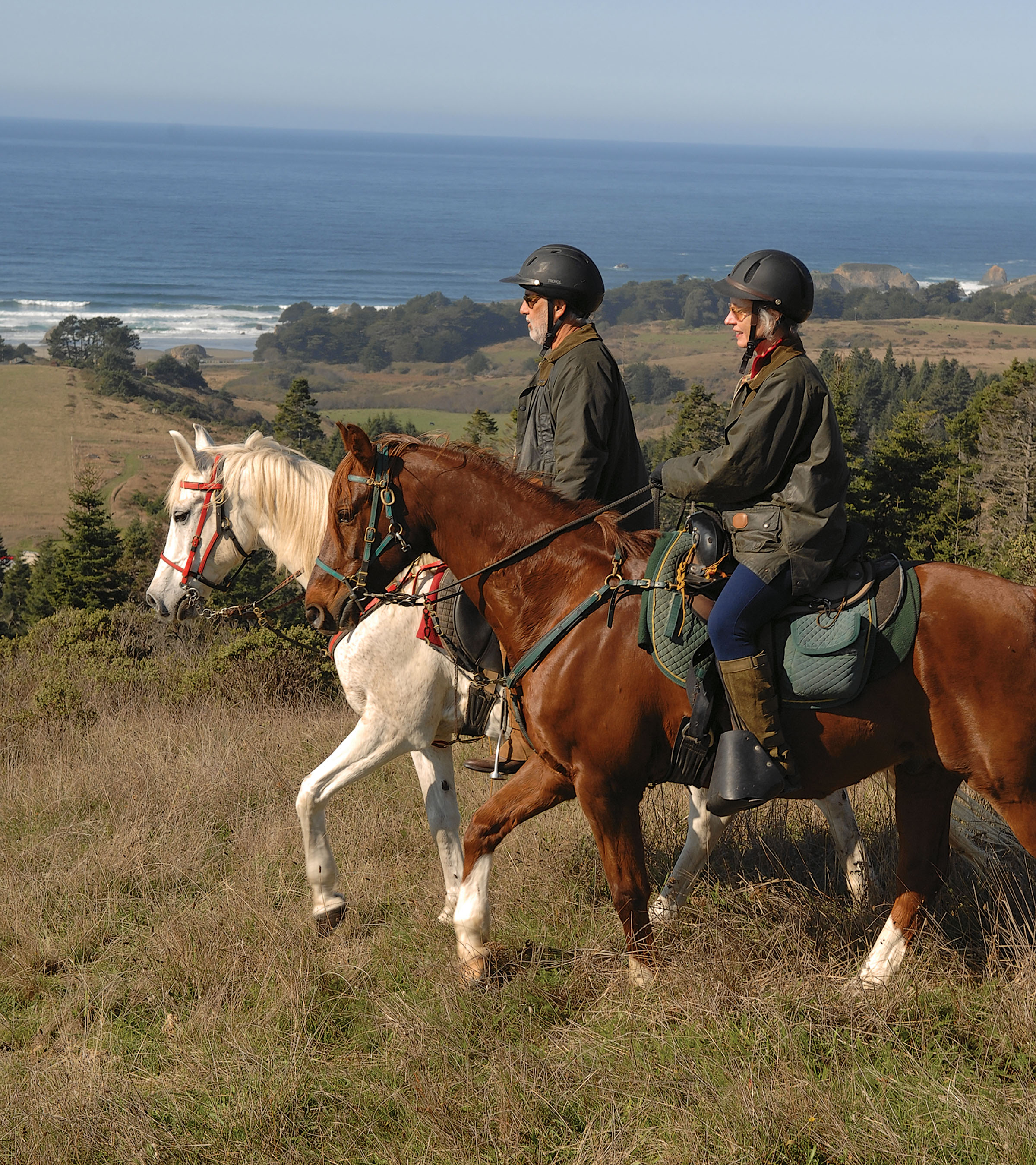
Know the Signs of Fatigue
You and your horse are a team. You need to know him well and read him intimately. He’ll give subtle hints that tell you when he’s starting to tire and needs to slow down, and as a good rider you must know how far and how fast to push your horse in a conditioning program.
Fatigue involves many body systems, and different horses react differently to over-exertion, but there are some basic signs you must be aware of. As a horse starts to tire, he usually becomes less eager or willing, and may slow down, stop on an uphill trail, or trot less freely downhill. Some keep going—even when they shouldn’t—and you might miss signs of fatigue unless you have a good feel for your horse.
Early signs of fatigue include less-perky head carriage and ear set and reluctance to continue. Your horse may try to go sideways instead of straight down a hill in an attempt to spare tired muscles. He may pass a few small, firm balls of manure instead of normal bowel movements. This early stage of fatigue usually isn’t serious if you can let him stop and rest, but it might take him an hour or more to recover enough to start back home. Dismount; unsaddle; and let him just stand, relax, graze, or drink.
Severe fatigue requires more immediate and close attention. Your horse might stand with his head down, not caring about his surroundings. If asked to move, he may be uncoordinated or stagger, not moving out freely. A male horse may drop his penis from the sheath. If your horse’s pulse stays higher than normal for more than 30 minutes after he stops, this indicates severe fatigue; he’s not recovering as he should. The higher the pulse and the longer it takes to get back to normal, the more serious the fatigue. If you learn to recognize when your horse is a little tired (before he’s actually fatigued), you can stop before you hurt him.
Warm Up and Cool Down
Proper pre- and after-ride work will alleviate soreness in your horse’s body and sourness in his mind. The warm-up helps limber his muscles and tendons to prevent injury and prepares his brain for work, and the cool-down helps prevent post-ride muscle stiffness and calms his mind.
Warm up with a few minutes of brisk walking, then jog for one minute, and drop back to the walk for a few minutes. Alternate the walk and jog until the horse is warmed up. This circuit elevates your horse’s respiration and heart rates and increases circulation to his muscles, preparing him for more strenuous work.
Cool down with slower work. If you were trotting on the trail, walk the last mile home. Do progressively slower work, easing your horse’s body back to resting rates of function. Continue walking until he stops sweating and begins to dry. If he doesn’t cool out properly, he’ll break into a second sweat after he stops working because his core temperature is still elevated. Moving, rather than standing still, helps get rid of excess body heat from exertion, flushes wastes from the working muscles (so there won’t be as much soreness or stiffness later), and allows his heart to return to resting rate. Cool-out exercise also helps keep fluid from accumulating in legs and joints after exercise.
Check your horse’s heart rate before you put him away, and make sure it’s down to his resting rate. After a horse is fit, he warms up and cools down quicker and easier, but a horse that’s not yet in top condition needs more careful warm-up and cool-down sessions.
[READ: Hydration & Cool-Down Tips for the Trail]
Get Yourself in ShapeYou’ll be much easier on your horse if you’re fit and can ride in balance with him. If you get tired, you start to sag and become “dead weight” rather than moving with your horse, in tune with his every movement. Don’t be a sack of potatoes. A fit horse can go a lot farther with a fit rider. Read more about rider fitness in “Fit for Your Ride.”
Add Fitness Exercises
Riding in open country is the best way to condition a horse (and a rider). Using natural terrain—up and down hills—keeps your horse’s mind engaged and his body working.
Begin with short daily rides. You might only go a mile or two the first day, so he won’t get tired. Soon you can work up to longer rides, giving him a day of rest in between. It’ll take at least two weeks of riding every other day to get a good start on conditioning to improve your horse’s endurance by burning off fat and replacing it with muscle.
A word of caution: Start on easy terrain to build his fitness before you try steeper country. Keep in mind that you’re conditioning his mental attitude as well as his muscles, joints, heart, and lungs.
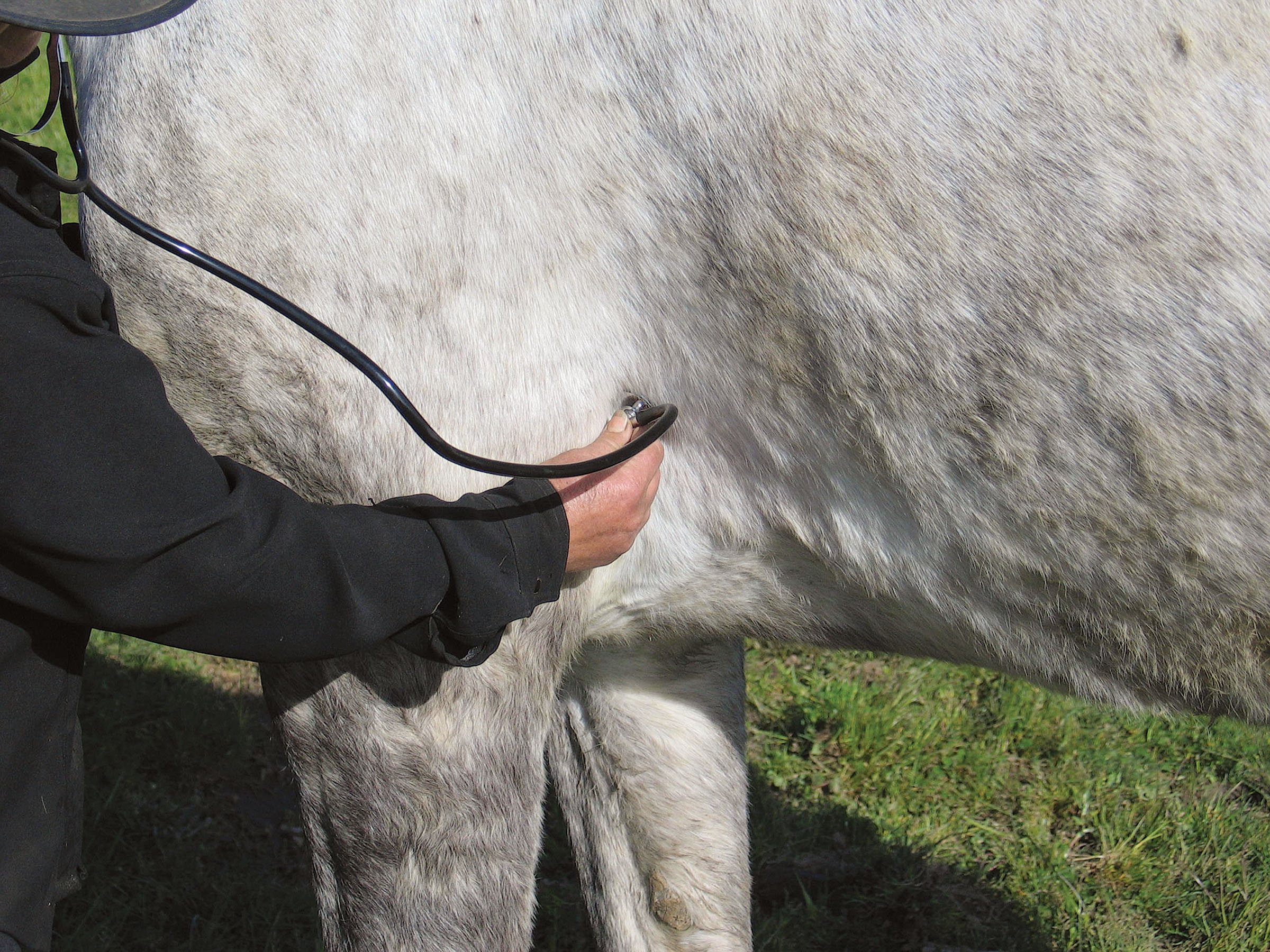
Monitor Pulse and Respiration
Regularly evaluate your horse’s fitness by monitoring his pulse and respiration rates before, after, and during rides. Count your horse’s breaths by watching his flank movements for 15 seconds, and then multiply by four for his respiration rate. To measure his pulse, place a stethoscope behind his left elbow and listen for the heartbeats, or feel his pulse at the digital artery beneath the fetlock joint or the artery that runs under the jawbone on each side of his face. Again, count for 15 seconds and then multiply by four to estimate his heart rate.
An average resting heart rate is 30 to 40 beats per minute, and average resting respiration is eight to 20 breaths per minute. Fit horses will have lower rates for both. During a conditioning ride with trotting and hill climbing, your horse’s heart rate should get no higher than about 160. After the ride, see how long it takes for his pulse and respiration rates to drop back to normal. In a fit horse, these rates start dropping as soon as he stops moving. Respiration rate should return to normal within 10 minutes or less, with pulse rate recovering soon after.
If recovery rates are good after a 10-minute rest or cool-down, the horse is handling the work and you can gradually add more speed and/or length to your rides. But always monitor his response to know whether you’re pushing him just right or too fast. If you start to get poor recovery rates or any other warning signs of fatigue, back off on the work. Give him a day or two of rest, and then start in again with work at a lower level of exertion before progressing again with the conditioning program.
[READ: Check Your Horse’s Vital Signs]
Use a Sweat Test
Your horse’s sweat can tell you if he’s getting in shape. A fit horse has thin, watery sweat that’s practically tasteless and odorless. Thick, smelly, salty sweat that lathers generally signifies an unconditioned horse. His muscles aren’t yet working efficiently; too many waste products are being produced and eliminated through the sweat, along with precious electrolytes. Want a quick evaluation? Use the taste test. Touch your fingertip to his sweat, then taste it. If the sweat is very salty, he’s not yet in shape.
Prevent Dehydration
A working horse loses fluid through sweat to cool his body and muscles, which makes adequate hydration crucial. On any ride, let your horse drink whenever he wants. The trail rider’s golden rule is to never pass up a water source. If a horse doesn’t want to drink, he probably doesn’t need to yet or the water is dirty and he doesn’t like the taste of it. You can help his natural cooling process by putting water over his body at every water source you come to, which gives his sweating mechanisms a break.
Check your horse’s hydration status with the pinch test. When you pinch the skin out from his neck or shoulder, it should snap right back into place. If it takes a couple seconds to sink back, he’s moderately dehydrated, and if it takes 5 to 10 seconds, he’s severely dehydrated. Additionally, a dehydrated horse has a slow capillary refill time. Press his gum with your finger (pressing the blood out of that spot), and note how long it takes for the color to return. A delayed capillary refill time further indicates dehydration. n

